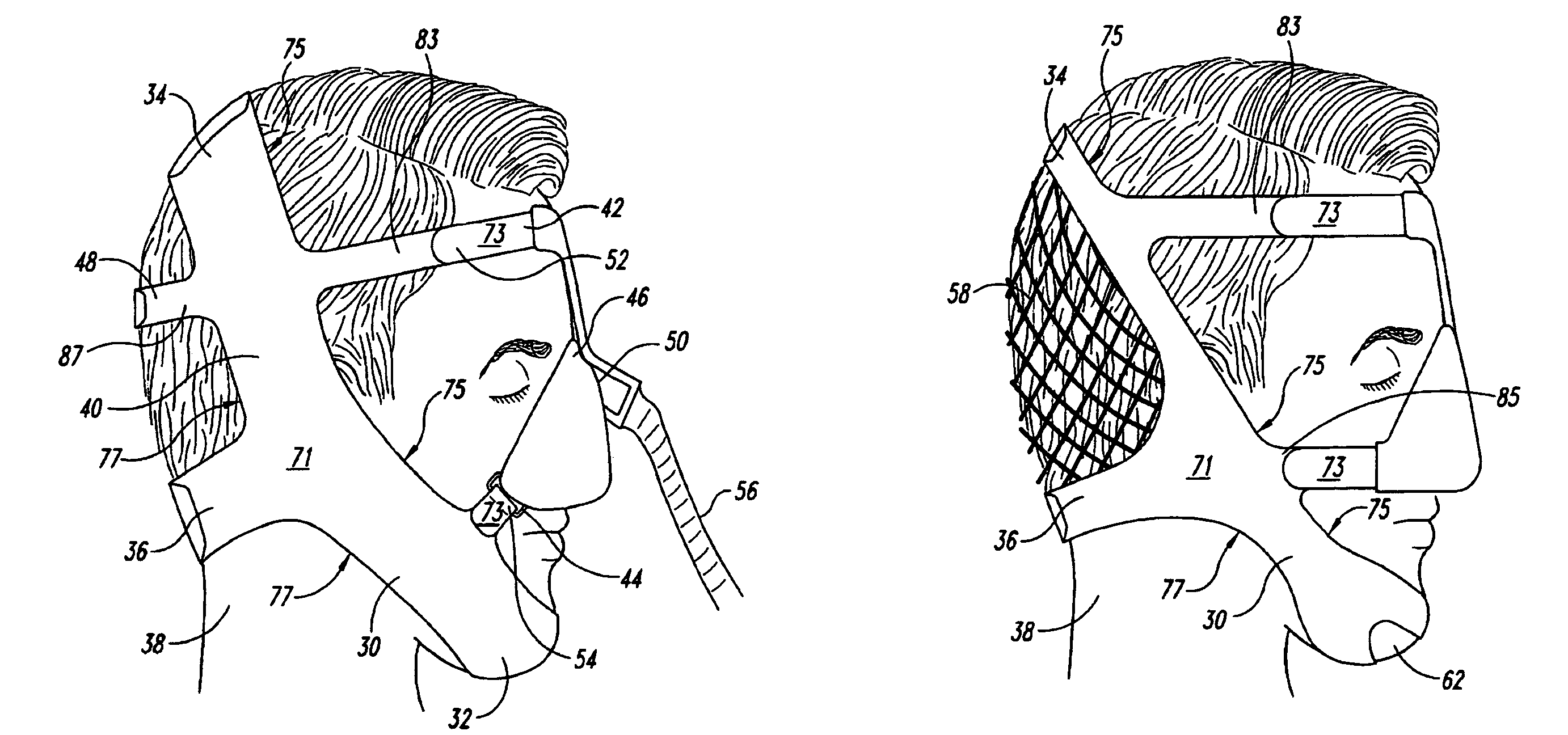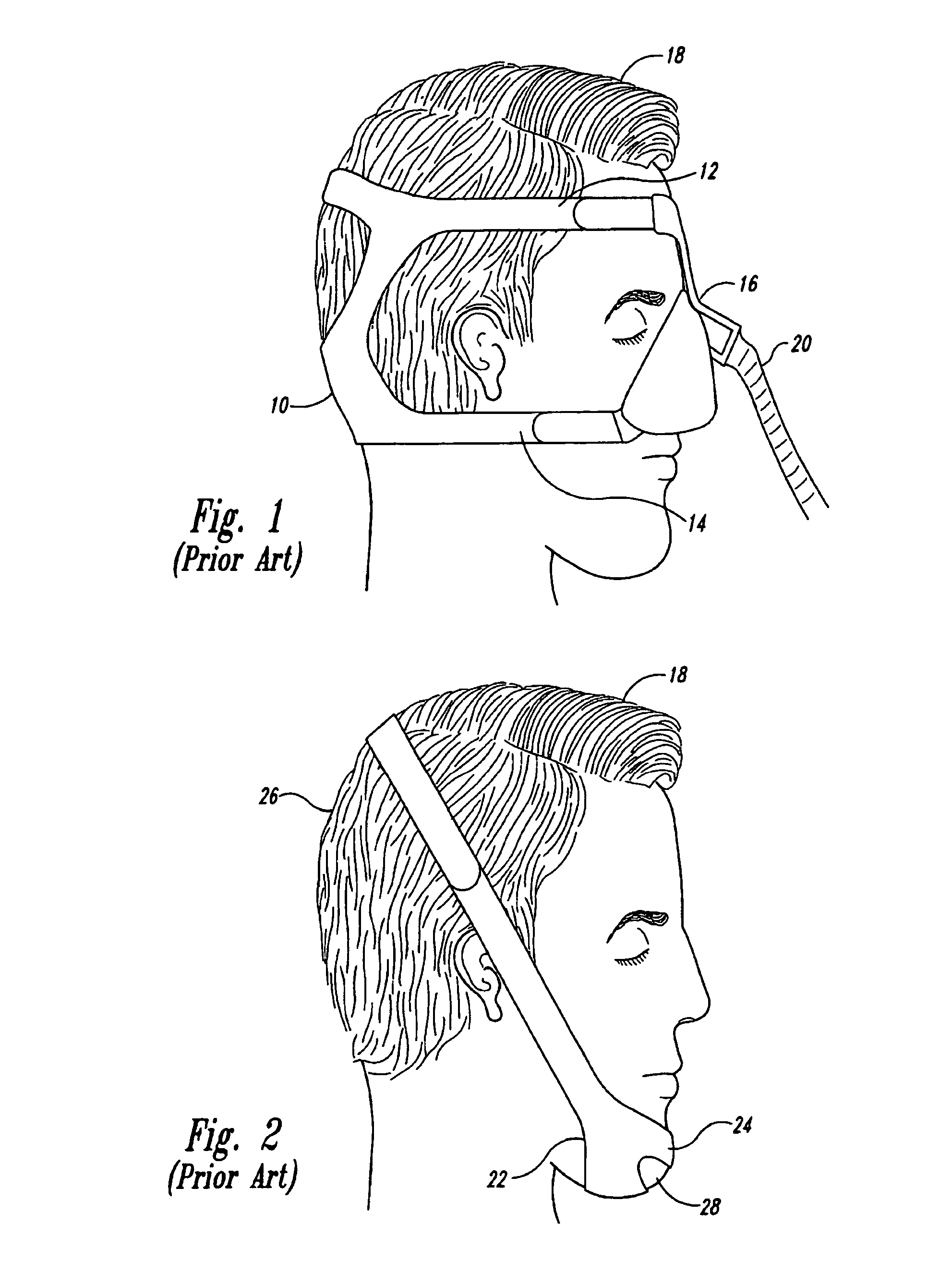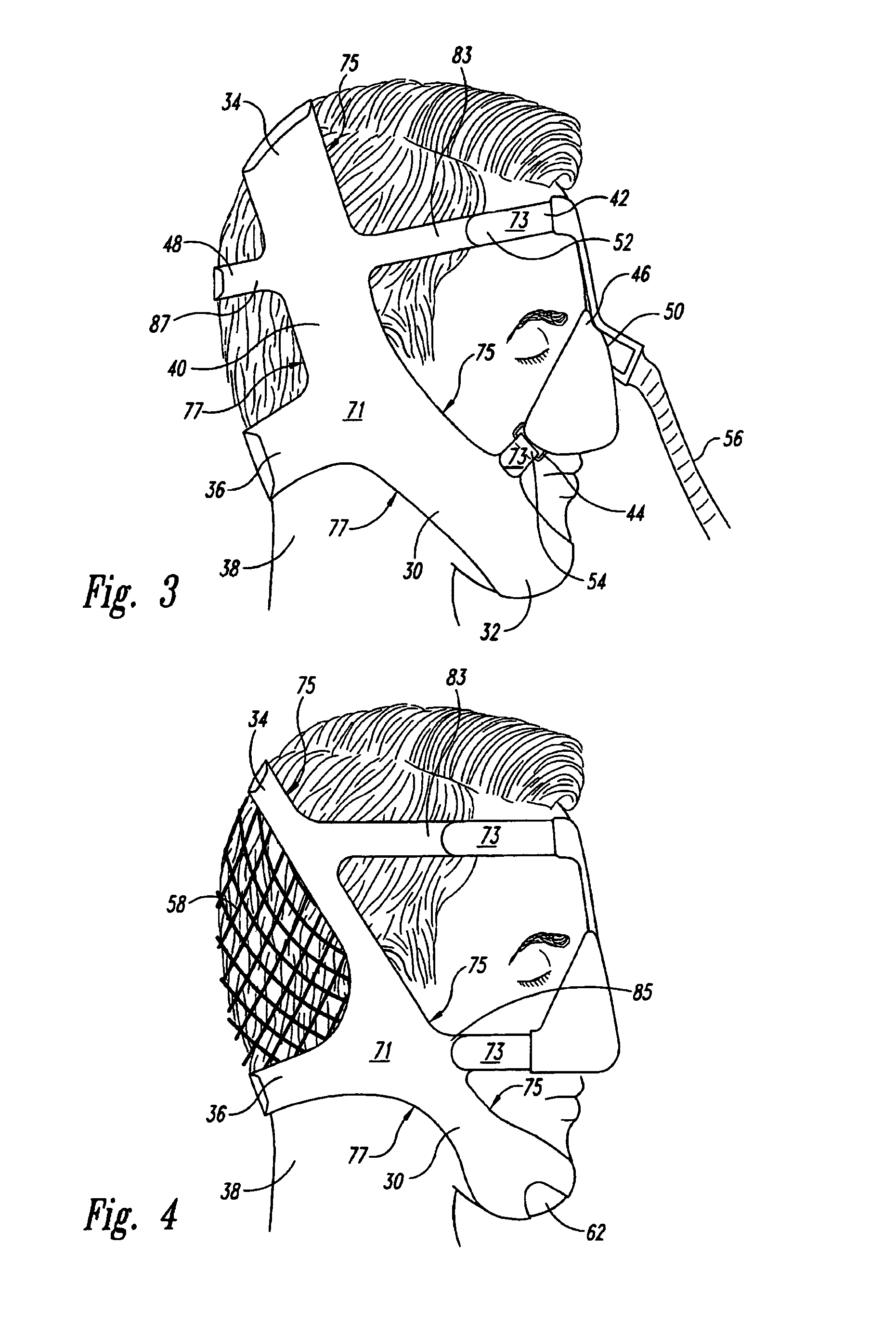Headgear apparatus
a headgear and apparatus technology, applied in the field of headgear apparatus, can solve the problems of interruption of breathing, excessive daytime sleepiness, and excessive daytime sleepiness, and achieve the effects of preventing leakage, preventing leakage, and reducing air leakag
- Summary
- Abstract
- Description
- Claims
- Application Information
AI Technical Summary
Benefits of technology
Problems solved by technology
Method used
Image
Examples
Embodiment Construction
[0037]FIGS. 3-6 illustrate embodiments of a headgear apparatus comprising, inter alia, a chin portion, a top portion and a neck portion. It should be noted that, although a substantial part of the discussion, both above and below, centers around the disorder of SA, the present invention is contemplated as additionally assisting in the treatment of various other oxygen-deprivation disorders. The present invention incorporates the mask and chinstrap, described above, into a single, one piece design that is strong, light-weight and extremely comfortable
[0038]As shown in FIG. 3, which illustrates one embodiment of the present invention, headgear apparatus 30 comprises chin portion 32, first end 34 and strap portion 36. Preferably, the chin portion 32, as shown, conforms to the chin of wearer 38, and provides a snug fit of headgear apparatus 30 with wearer 38. Likewise, first end 34 conforms to the top of the head of wearer 38, and first strap portion 36 conforms to the back of the head ...
PUM
 Login to View More
Login to View More Abstract
Description
Claims
Application Information
 Login to View More
Login to View More - R&D
- Intellectual Property
- Life Sciences
- Materials
- Tech Scout
- Unparalleled Data Quality
- Higher Quality Content
- 60% Fewer Hallucinations
Browse by: Latest US Patents, China's latest patents, Technical Efficacy Thesaurus, Application Domain, Technology Topic, Popular Technical Reports.
© 2025 PatSnap. All rights reserved.Legal|Privacy policy|Modern Slavery Act Transparency Statement|Sitemap|About US| Contact US: help@patsnap.com



